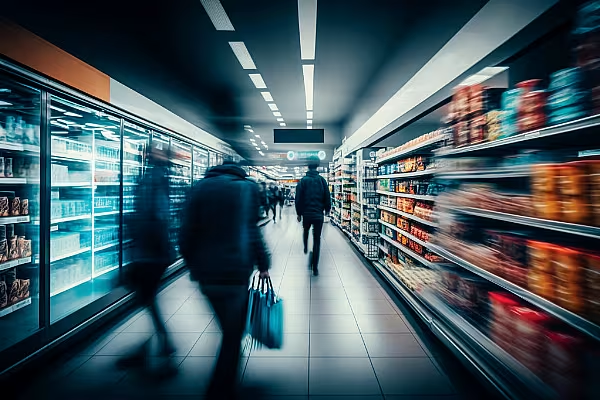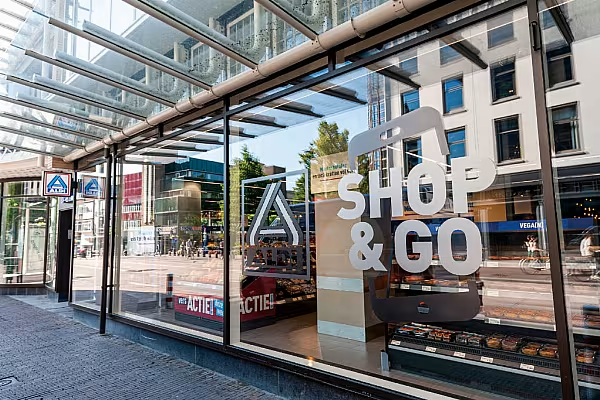ESM chats to Kristina Rogers, EY Global Consumer Leader, about whether retailers should re-evaluate the meaning of Shrinkage. This article first appeared in ESM’s January/February 2024 edition.
In January, EY Global Consumer Leader Kristina Rogers published an interesting article on LinkedIn, acknowledging the growing problem of shrinkage in the marketplace, but also suggesting that increased levels of shrinkage could, in fact, offer a ‘silver lining’ to retailers, prompting them to reimagine their product assortment, store layout, and relationship with the customer.
As Rogers put it, shrinkage is forcing retailers to “critically review and redesign the experience and product assortment they offer consumers. More associates and affordable products can help create the differentiated in-person shopping experience that brings consumers back to their stores.”
It’s an interesting take on what is certainly a growing challenge for retailers, so, with that in mind, ESM caught up with Rogers to discuss the potential ‘opportunities’ that shrinkage could present.
ESM: In recent years, retail has been very focused on improving efficiencies for the consumer. But has this led to increased shrinkage, do you think?
Kristina Rogers: In recent years, the implementation of retail technology has helped the consumer more in terms of shopping, checking out and payments, for example.
There has been a certain level of pullback on some of that, however, to ensure that the retailer has a more complete view on whether that is adding to the issue of theft and shrink, or what are the ways in which, maybe, they need to rethink either store design or the number of staff that are in control of some of these operations in the store.
There’s certainly a difference between how grocery and drugstore/pharmacy settings are addressing this. Certainly, in the latter, we’ve observed and tracked higher-value items, many of which are now being locked up in a cabinet, requiring assistance from staff. In some places, the retailer has elevated their service to accompany this change, while in other places, this hasn’t necessarily been the case.
What you’re advocating for is a balance – maintaining convenience and a smooth transaction process, but incorporating a more human touch, rather than relying solely on automation?
Anecdotally, I’ve observed that retailers here in the US have increased the presence of staff, particularly around self-checkout areas. I was actually surprised during my recent visit to the UK by how automated and solitary the ordering and checkout processes were for me as a customer – there appeared to be fewer staff around.
In the US they seem to have structured it differently, with a notable number of staff available to assist, monitor, and ensure a smooth process.
When self-checkouts and automation were introduced, there were fears that this would lead to job losses. However, in the US, as you’re saying, while there is still automation around the checkout process, there’s also a trend for retailers to heavily emphasise personnel, loading the store and the checkout area with staff?
Yes, I think you’re right. Initially, there was certainly pushback from consumers on using self-checkout, as people felt they had to do it all themselves. Now they’ve adapted, learned how to use the technology, and understand the process. However, despite the initial retailer perspective of investing in technology to reduce the need for personnel, it seems like there are still plenty of assistants present in stores.
In the US, for example, when you’re buying alcohol, you have to be 21. For this purpose, they need people available to check your proof of age – regardless of whether you appear to be 30 or under, you’ll be carded and checked – so there’s a necessity for personnel to be available and on hand to do this.
What we’ve observed is that, even in soft lines, such as clothing or textiles, there’s a lot more inventory locked up in the store, so it requires someone to help, unlock the items, and assist you with the purchase.
There are some retailers where this is done well, and you don’t really feel like there’s large number items under lock and key.’ Instead you get the impression, ‘Here’s a retailer who knows what they’re doing, and is very attentive and courteous,’ so I believe we’ll see more of that personal service – if it’s done well.
Bringing it back to a supermarket angle, one of the reasons for increased shrinkage worldwide is the impact of the cost of living and inflation. Reallocating shelf space to private-label products meets that consumer demand for value.
You’re absolutely right, but, in addition to inflation and the rising cost of living contributing to the rise in theft – at least in the United States – is reselling. Branded items tend to have a higher potential for resale, even in the grocery sector. What we’ve understood from some of our clients is that private-label items are not as valuable in this regard.
So, private label serves a dual purpose. On one hand, it provides the value-conscious consumer with the opportunity to fill up their shopping basket based on their household budget. On the other, it acts as a deterrent to theft because private-label items lack the brand value that would make them attractive for resale, especially outside of the store where they are sold.
Shrinkage poses a unique challenge in the United States, currently, and I think private label helps to curb a bit of that.
You mentioned that shrinkage potentially has a ‘silver lining’ for retailers, which is an interesting position. Could you sum up where the quick wins would be from thinking about shrinkage in this way?
Rather than just thinking about a solution to get the shrinkage number down, I think it could present an opportunity for retailers to think about redesigning how they present their stores, or how they offer certain products to their customers.
Shrinkage is a significant and growing challenge for retailers, absolutely, but it’s also an opportunity to think about why this is happening. What kind of products are vulnerable? Can we replace them, put them in a specific part of our store? Can we allocate more staff specifically around that? Do we need more people at checkout, or should we push people more to shopping online, if that’s possible?
I think it’s important to have a good look at shrinkage from an analytical point of view, understand where a business is vulnerable, and then seek to act on it.














